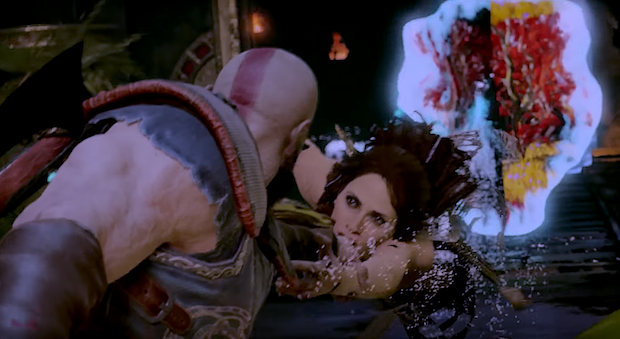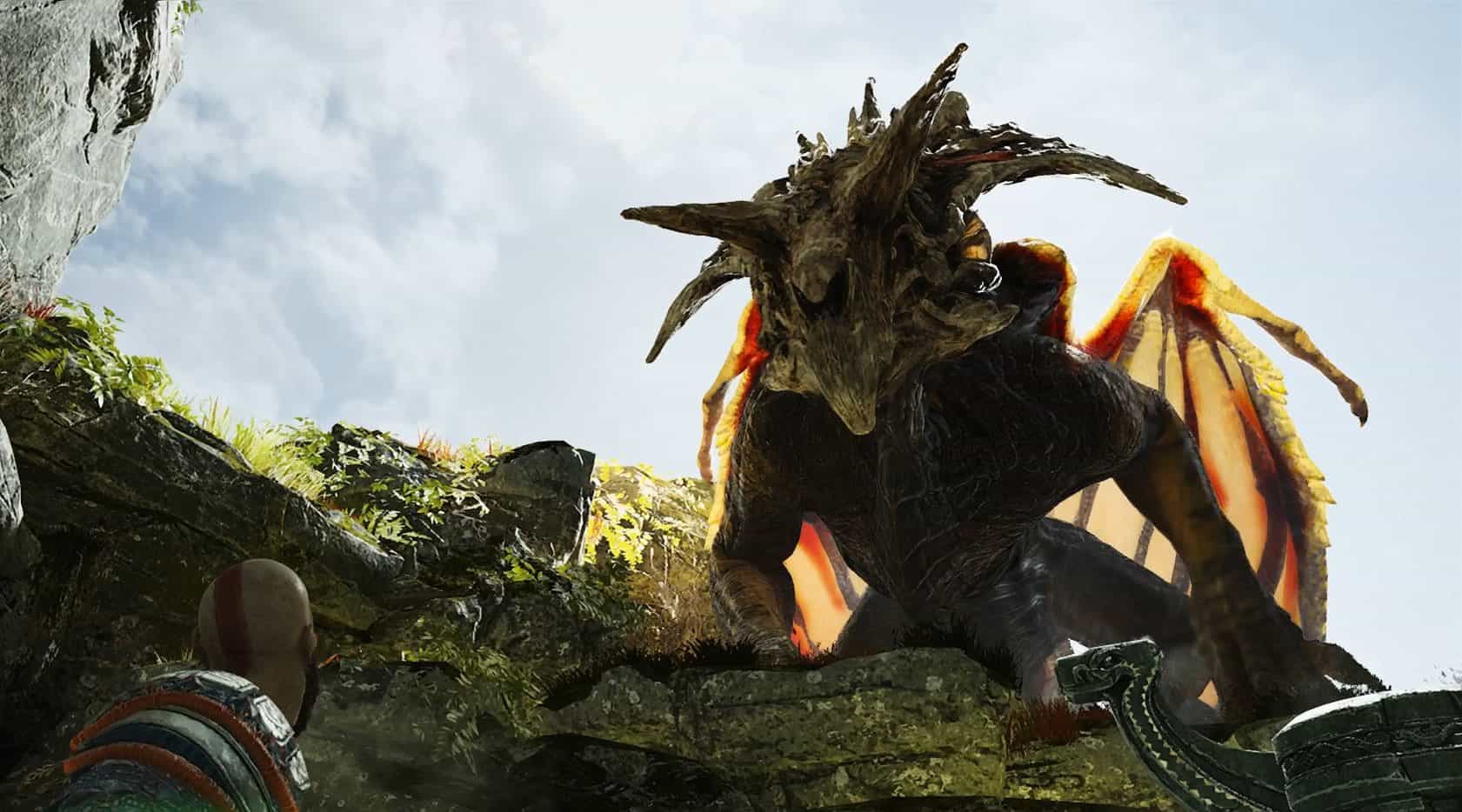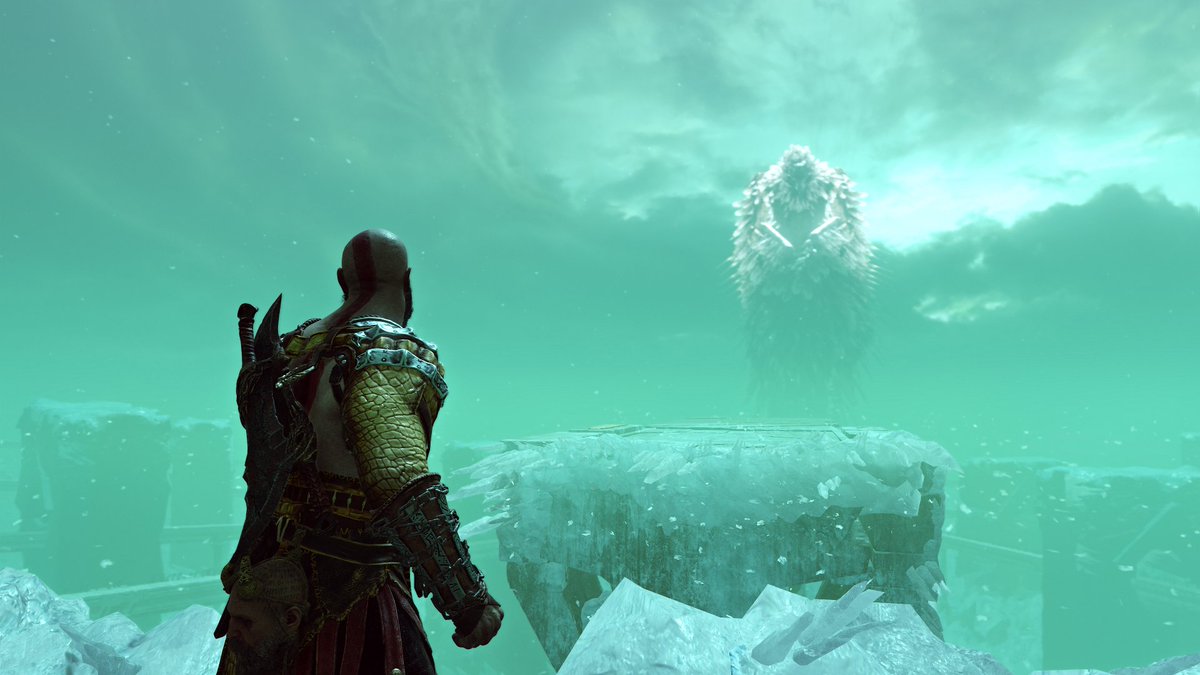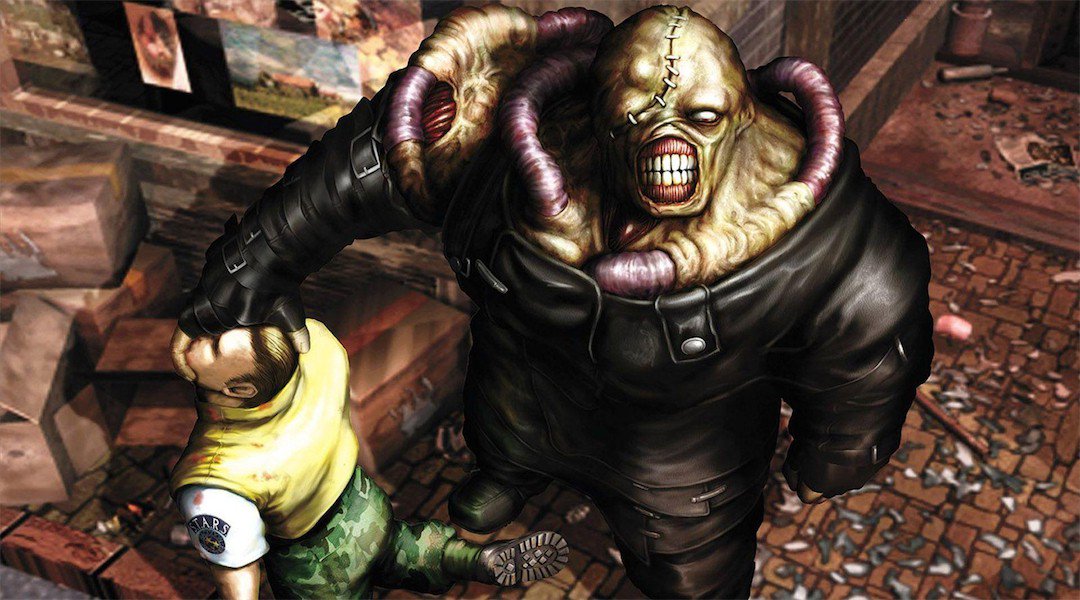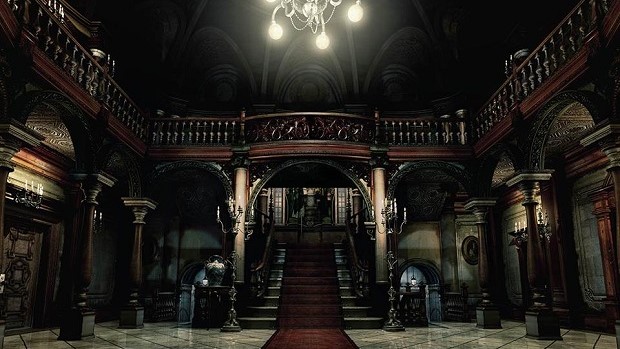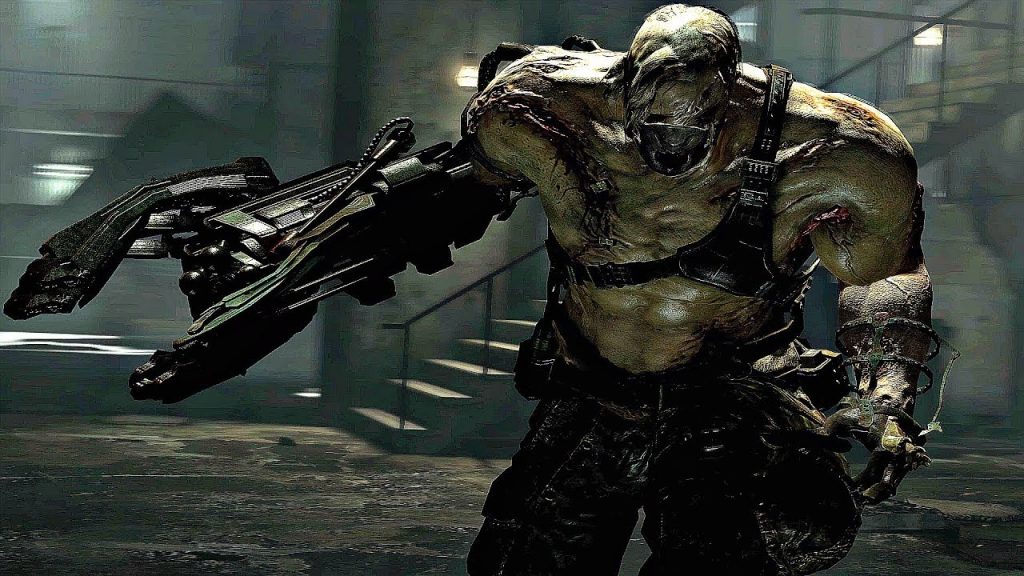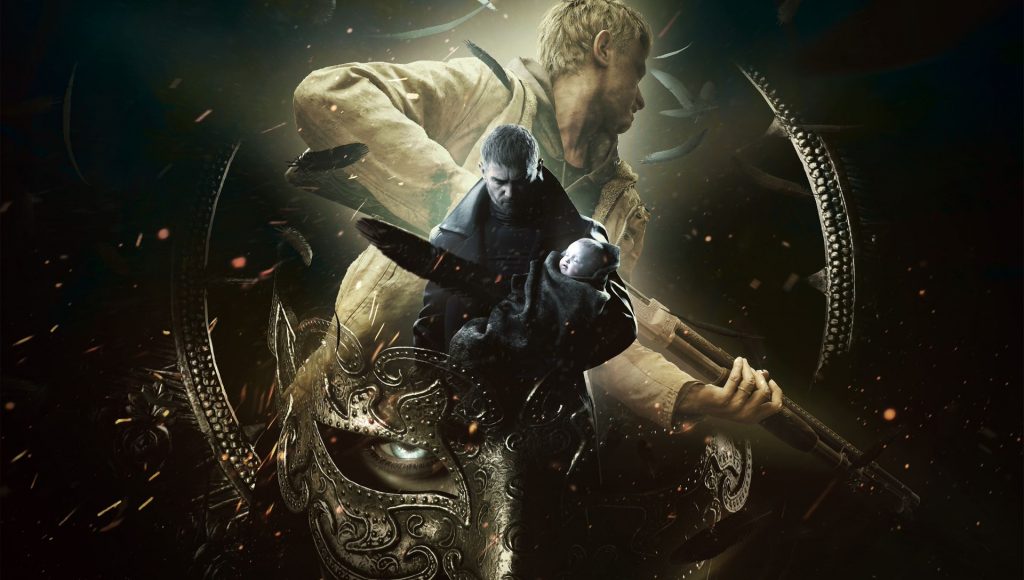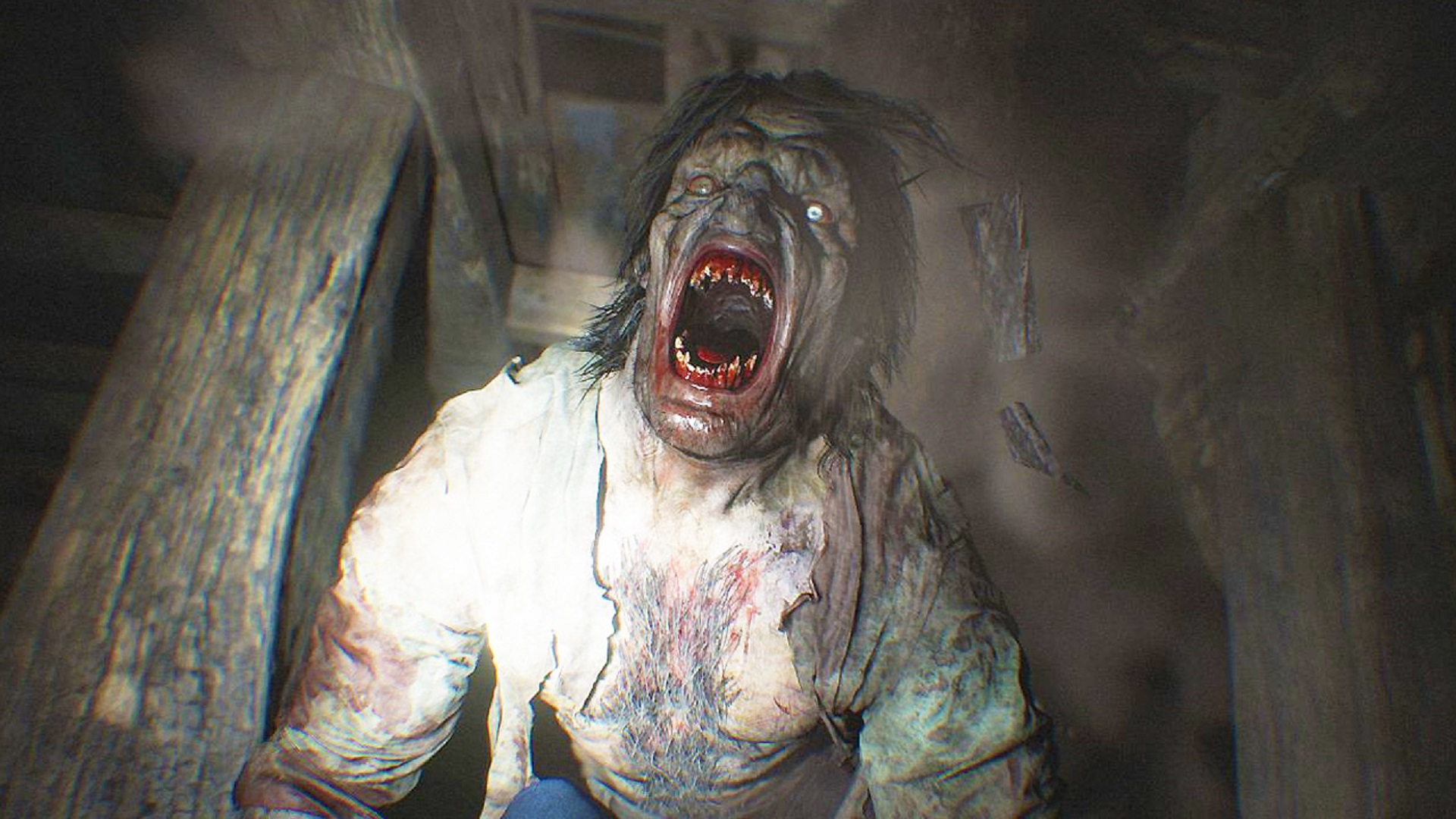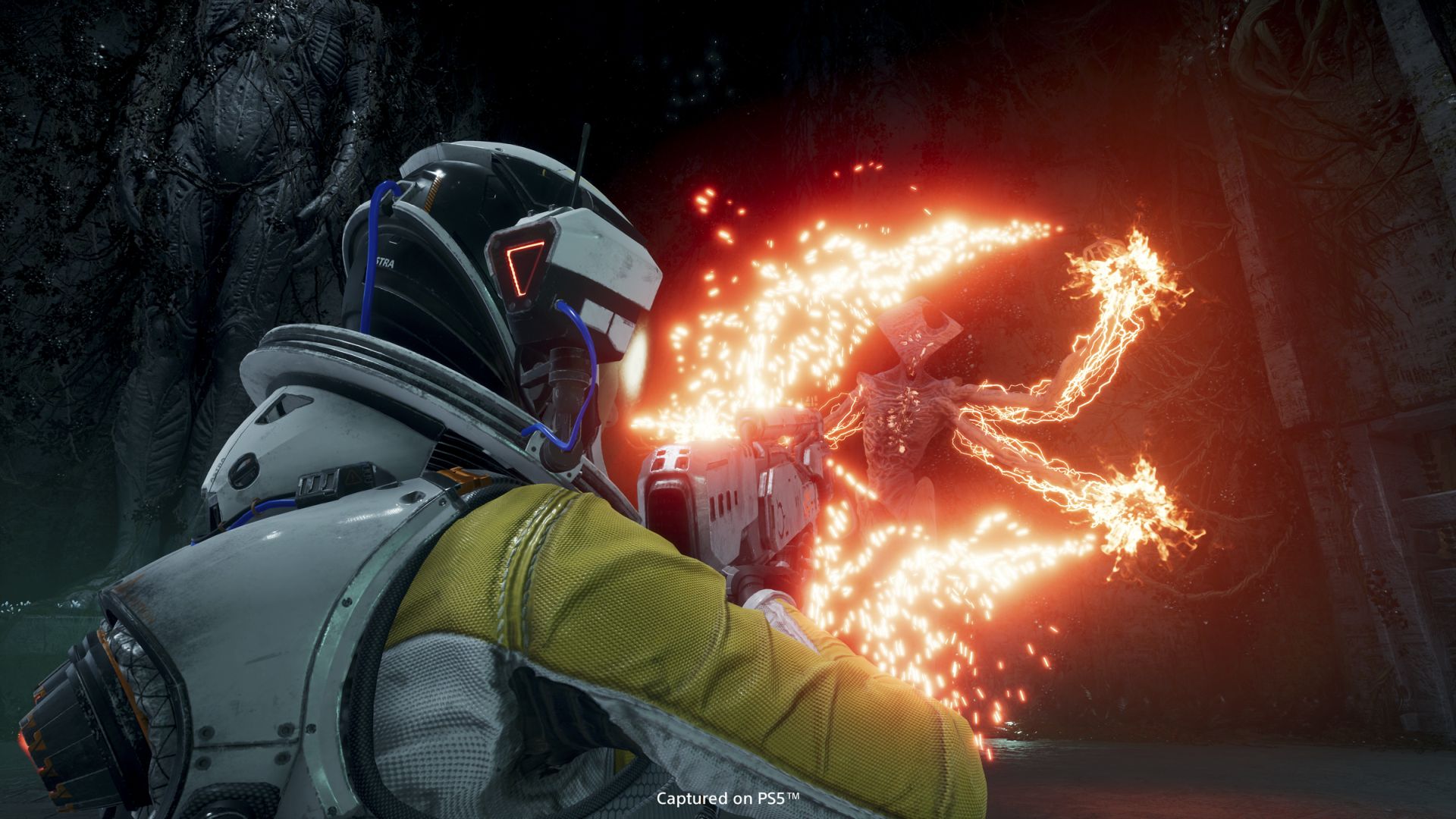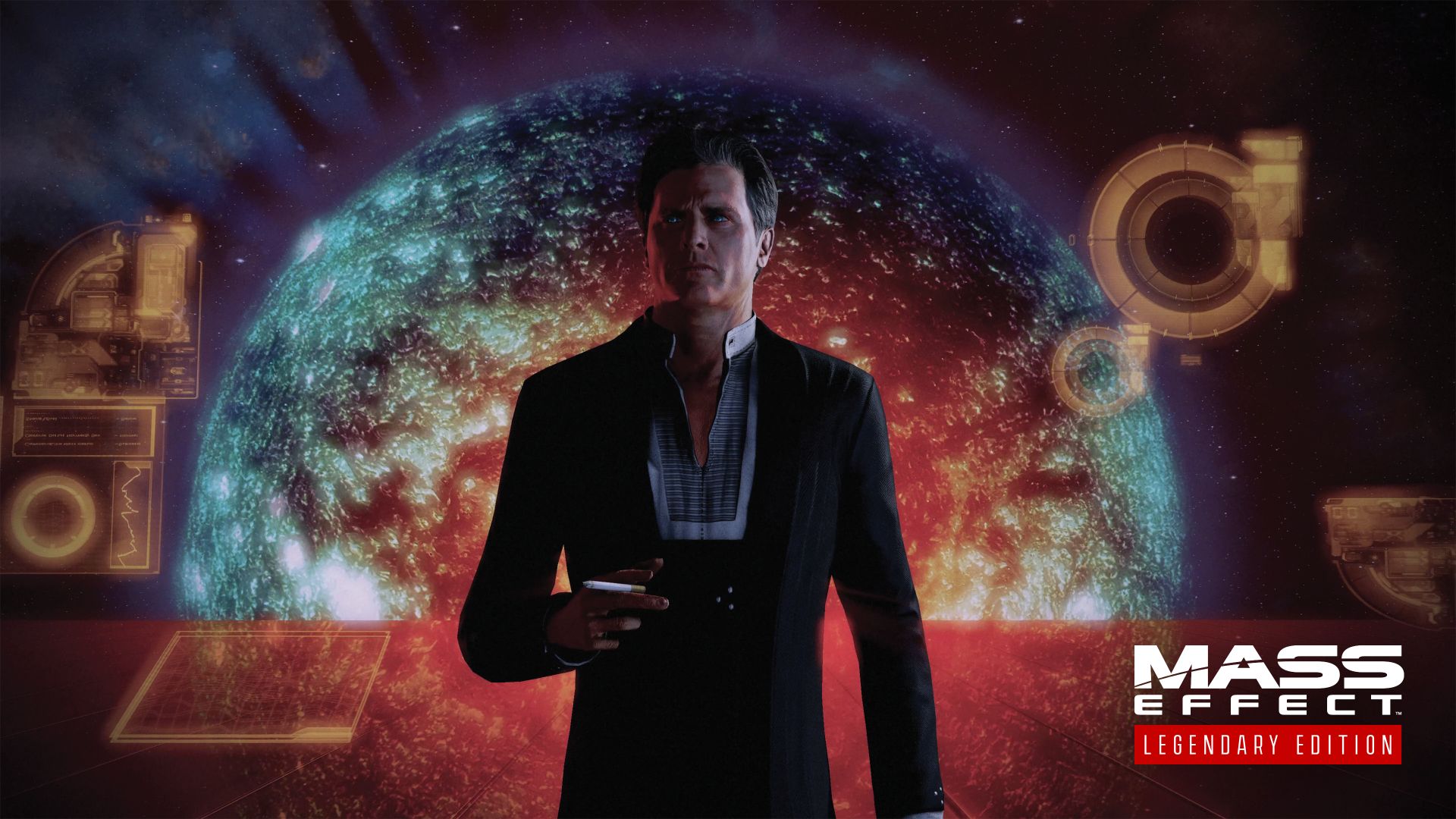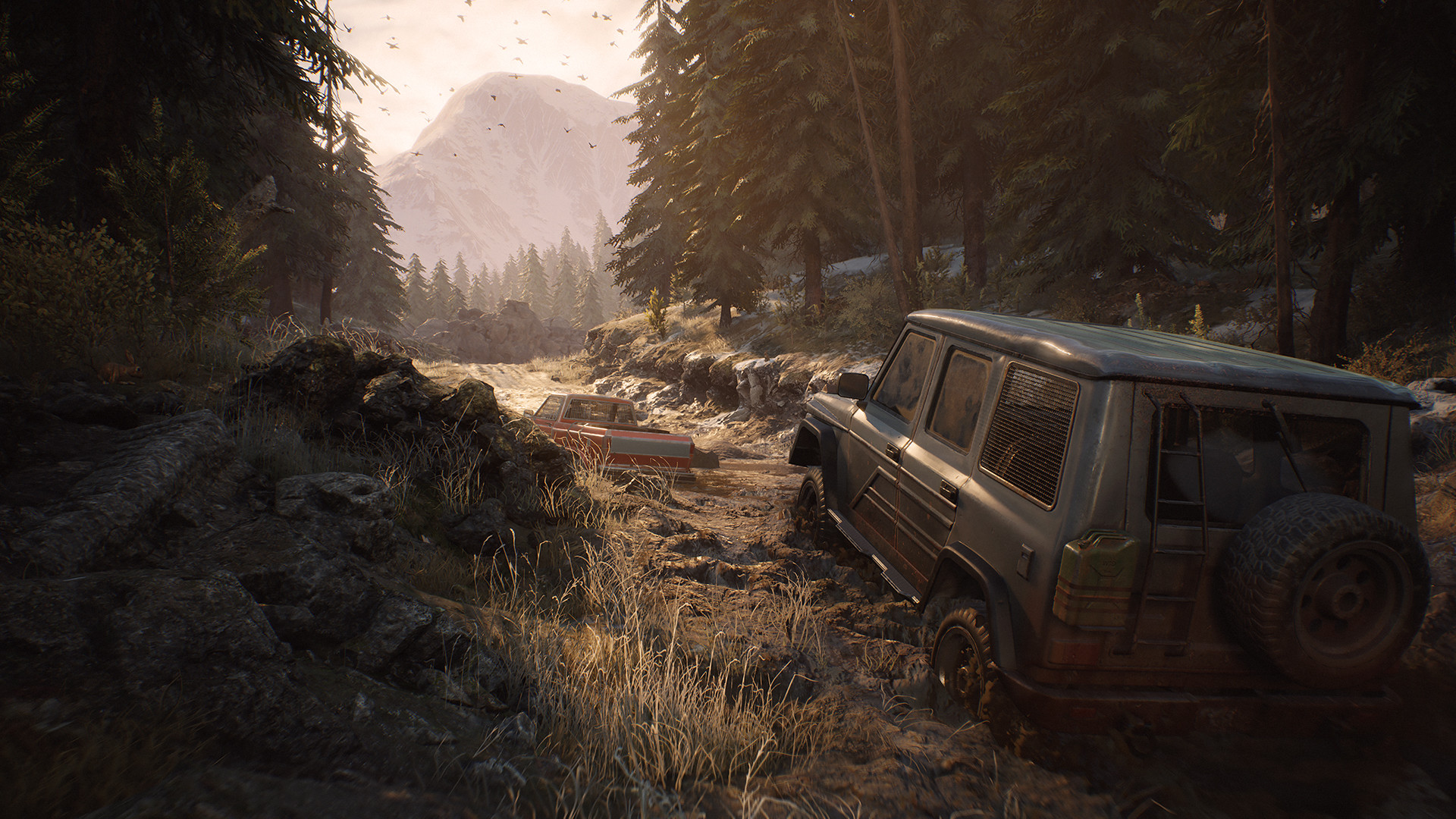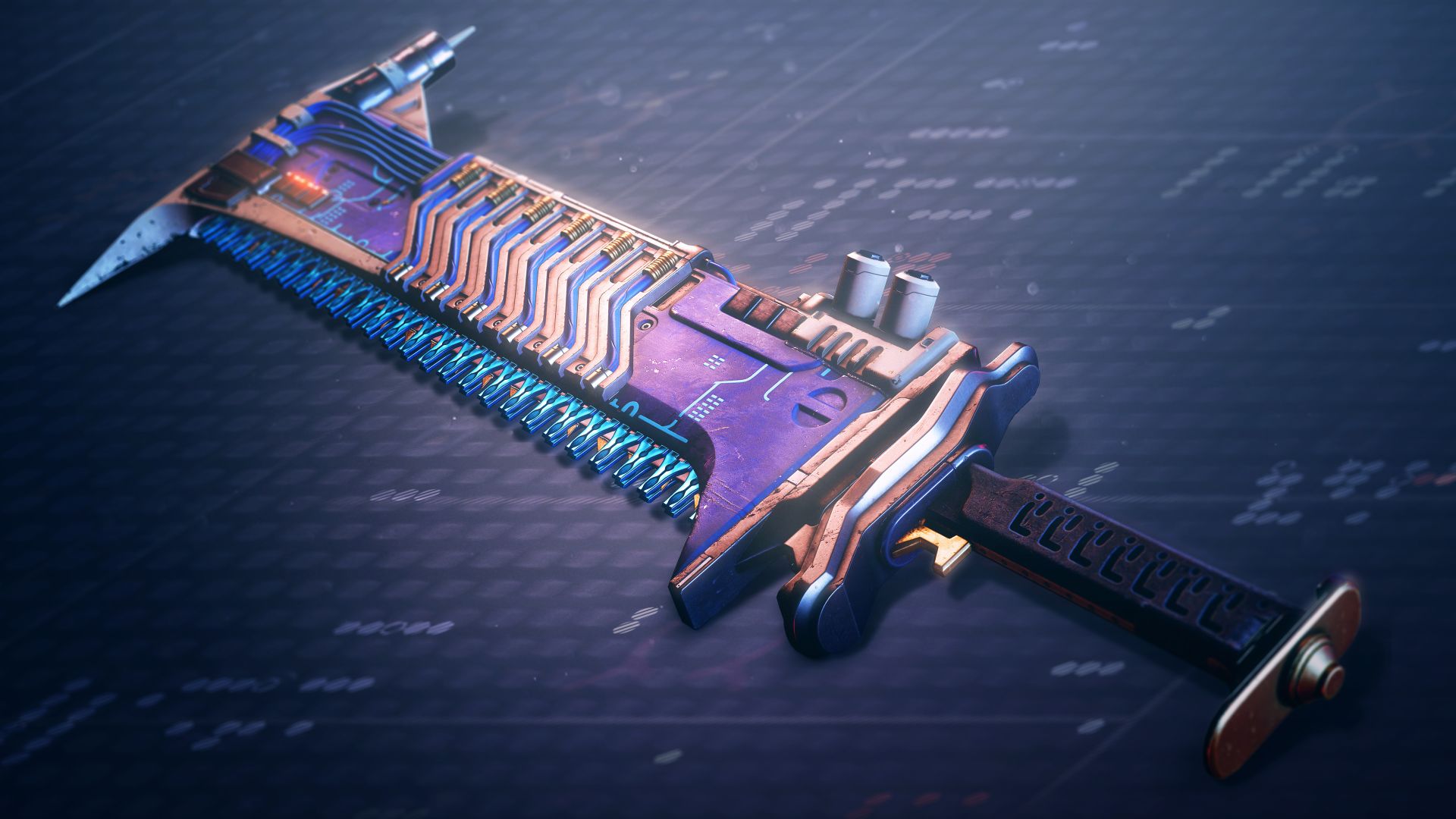Age of Empires 4 Releases in Fall 2021, Chinese Civilization Revealed
Relic Entertainment and World's Edge has a lot in store with Age of Empires 4, from new civilizations to brand new campaigns. It also received a release window of Fall 2021 for PC, releasing on the Windows Store, Steam and Xbox Game Pass. The development team also showcased the Chinese civilization – check it out below.
Possessing strong growth potential, the Chinese civilization is all about expansion and creating massive armies to overwhelm the opposition. While we still need a closer look at the civilization's perks, it should prove to be a formidable force for players. Thus far, two civilizations have been showcased for Age of Empires 4 with the Delhi Sultanate debuting earlier.
Age of Empires 4 is currently in development with all footage showcased being in-engine. Check out one of the four new campaigns here which sees King Harold of England battling against Duke William fighting for the throne. Stay tuned for more details and updates as the event continues.
Age of Empires 4 – Delhi Sultanate Civilization and Norman Campaign Revealed
The Age of Empires Fan Preview started off with a bang, showcasing the new civilization coming to Age of Empires 4 along with one of four new campaigns. The Delhi Sultanate makes it debut, having an advantage in research and technology. Meanwhile, the new campaign explores the conflict between King Harold and Duke William of Normandy. Check it out below.
Set in 1066, the Norman Campaign sees Harold, King of the Anglo-Saxons, dealing with Duke William who lays claim to the throne. The two collide at the Battle of Hastings but there's more in store. While Normandy is besieged, Harold has to deal with Viking raiders (who have allied with the Northern barons). Meanwhile, the peasantry revolts against a king they don't recognize.
Age of Empires 4 is currently in development for PC but doesn't have a release window yet. All footage showcased during the Fan Preview has been captured in-engine but more gameplay is set to be revealed. Stay tuned for more details as the stream rolls on.
God of War: Ragnarok PS5 – 10 Boss Fights We Want
God of War as a series has built its reputation on excellent boss fights, and even though that was an area where the 2018 soft reboot fell short of expectations, we're quite optimistic about how things will turn out in its upcoming sequel. With all the groundwork for the engine and new gameplay mechanics in place, SIE Santa Monica will hopefully be in a position where they can spend more time on in-game content, which will probably include boss fights. With all of the rich depths of Norse mythology and the series' own lore to dive into, there's no shortage of figures that Kratos and Atreus could come up against in set-piece encounters, and here, we're going to talk about a few that we're hoping will make the cut.
WARNING: There are spoilers ahead for God of War (2018).
THOR
Let's kick things off with the most obvious pick. God of War (2018) ended with the incredible tease of a future locking of horns between Kratos and Thor, son of Odin. The entire game, in fact, built Thor up as a formidable foe, and there's absolutely no doubt that he's going to be a major antagonist in God of War: Ragnarok. That there will be a Thor boss fight is not even a question at this point, so as far as this entry is concerned, what we're hoping for is solid execution. And given the series' track record, we're more than just a little optimistic about that as well.
SURTR
The head honcho of all fire giants, Surtr is almost definitely going to have a major role to play in the upcoming sequel. According to Norse mythology and according to God of War's own take on it, Surtr is destined to be a key figure in Ragnarok, supposedly as the one who will bring about the destruction of Asgard. Getting to take on this massive jotun in an epic boss fight would be a very God of War thing for the game to do. Of course, as things stand right now, Kratos only seems to be headed for a fight with the Aesir, and his association with the jotun has been surprisingly friendly- from Faye to Jormungandur to, of course, Atreus, who is half-jotun. But then again, Kratos has never been one to value associations like that too much, so you never know.
HEIMDALL
If Kratos does indeed head to Asgard to take on the Aesir – and it's looking very likely that he will – there's absolute no way he will not come up against Heimdall. He is, for all practical purposes, Asgard's first line of defence, and in charge of anyone who enters and exists the realm using the Bifrost. An adrenaline-fuelled boss fight against him the moment players enter Asgard sounds like a very alluring prospect indeed. On top of that, in actual Norse mythology, Heimdall and Loki are supposed to kill each other during the events of Ragnarok. Whether or not Atreus will die at Heimdall's hands remains to be seen- God of War doesn't necessarily have to follow the mythology to the letter, of course, and it hasn't exactly done that in the past either. But even if it does portray events that are at least inspired by the mythology, a face-off between Atreus and Heimdall looks very likely.
FREYA
Again, this one is pretty much guaranteed to happen. After spending much of God of War (2018) as Kratos and Atreus' closest ally, Freya broke under the weight of grief when she had to watch her son be killed by Kratos. The relationship between her and the father and son duo has soured understandably, and Freya looks hellbent on ensuring that she rains down more pain on Kratos than he could imagine. I don't know about you, but to me, that sounds like a boss fight in the making.
FREYR
If Kratos and Atreus do face off against Freya, there's a pretty good chance that they'll lock horns with her brother Freyr as well. But his familial connection to someone who's shaping up to be a formidable foe for them isn't the only reason we think he could show up as a potential enemy in God of War: Ragnarok. God of War (2018) has portrayed Freyr as a figure that has deep ties with the Light Elves (and he does indeed have ties to Alfheim in Norse mythology), and we all know that what went down in Alfheim in God of War (2018) was only setup for bigger things that are yet to come. The war between the Light and Dark Elves is far from over, and if that plot point returns in a significant manner in Ragnarok (which seems pretty likely), we would't be surprised to see Freyr taking centerstage- perhaps even as a boss fight.
RAGNAR LODBROK
Though Kratos has fought and defeated no small number of mythological figures and titans and what have you over the course of several games, every now and then, he also comes up against (relatively) normal humans. In God of War 2 alone, in fact, he fought the Barbarian king as well as Perseus. And we're hoping that there will be a similar boss fight against the legendary Viking Ragnarok Lodbrok in God of War: Ragnarok. After all, if Kratos does present a major threat to Asgard, wouldn't it make sense for Odin to summon the greatest Norse warrior at his disposal from the halls of Valhalla to fight by his side?
FAFNIR
The boss fight against the dragon in God of War (2018) was one of the game's highlights, which is why we're hoping to fight another dragon in its sequel. Kratos and Atreus managed to free dwarf-turned-dragon Fafnir from his shackles in the previous game (at least if you did that side quest), and he's still out there in the world somewhere. There's every chance they could cross paths with him once again- maybe even in another side quest. And maybe that side quest could end with a boss fight against said dragon? One can always hope.
ATHENA
This one's a little tricky. By all accounts, Athena is dead- but she was very much around (if not alive) in God of War 3. In God of War (2018), meanwhile, she showed up in a couple of scenes, though the jury's still out on whether she was actually Athena herself, or just a hallucination, or perhaps just a storytelling device. Either way, it's clear that the series isn't willing to let Kratos live down his eventful past all that easily (nor should it), and if it does want to double down on that, bringing Athena back would be the perfect way to do so. We do admit, doing that might seem a little tricky, and maybe even incongruous with the direction the story is taking- but we'll be thrilled if God of War: Ragnarok does manage to find a way to bring her back in a satisfactory manner and have Kratos fight against her to put her down for good.
HRAESVELGR
Hraesvelgr, also known as "what the hell is that giant bird in Helheim and why hasn't Kratos ripped its wings off already", was supposed to be a boss fight in God of War (2018) itself, but the game's development timeline forced SIE Santa Monica to cut it out of the game. As disappointing as that is, we're hoping that they will decide to finish what they started in God of War: Ragnarok. A boss fight against that giant is just the sort of thing that God of War does often, and does so well, which is to say we'll be really surprised if this boss fight isn't in the game.
ODIN
Sooner or later, Kratos and Atreus will obviously go up against Odin. He's the big bad of this arc, and he's going to be their final enemy before God of War wraps up its Norse saga. And there's every chance that SIE Santa Monica saves him for the final game of the saga, and instead focuses on someone else (probably Thor) as the primary villain in God of War: Ragnarok. Then again, that doesn't mean Odin cannot be a boss in the next game. Zeus was the big bad of the series' Greek saga, and he ultimately died in God of War 3, but there was a pretty rad Zeus boss fight in God of War 2. Who's to say something similar can't happen in Ragnarok?
The Evolution of Resident Evil
Resident Evil is 25 years old, and it's fair to say that it's been a very eventful 25 years. Any franchise that has been around and been successful for as long as Resident Evil has been needs to be willing to change and adapt to changing tastes, and Capcom's horror franchise in particular has always excelled at that. No, not all experiments have been successful, and sure, the franchise has stumbled in some pretty embarrassing ways at times, but the fact that it's still going as strong as ever and enjoying critical and commercial success with its new entries really says something about the enduring quality of Resident Evil. Which is why charting its growth and evolution through the two and a half decades that it's been around is so fascinating.
When Capcom first released Resident Evil, the struck gold. It definitely wasn't the first of its kind – notable releases such as Sweet Home and Alone in the Dark had already laid down the foundations for what would become the survival horror genre years later – but Resident Evil was when survival horror truly came into its own and properly became a thing. Hell, the game even coined the term "survival horror", something that is accepted as a generic categorization these days, which should tell you something about its impact and legacy. Taking the haunted mansion setting of Sweet Home and the fixed cameras perspective of Alone in the Dark, Shinji Mikami and Capcom concocted that was entirely unique and original.
The fixed cameras were very much also a product of the limitations of technology at the time- Mikami originally conceptualized Resident Evil as a first person game, which he figured would be a much more immersive horror experience, but decided to go with a fixed cameras approach inspired by Alone in the Dark, since the pre-rendered backgrounds that would have gone along with that would have allowed for a much better looking game. And it ultimately turned out to be the right decision, because fixed cameras, alongside tank controls, would go on to define the next ten years of the franchise.
Those two defining factors, as well as a focus on lock-and-key exploration, puzzle solving, inventory management, and ammo and resource management became the core pillars of what a Resident Evil game should be. The first game in the series enjoyed incredible critical and commercial success, and greenlighting a sequel became a no-brainer for Capcom, with Hideki Kamiya taking over as director, while Shinji Mikami moved into a supervisory and production role. Capcom, of course, wanted the sequel to be bigger and better, not just in terms of quality, but also in terms of sales, and Kamiya had a battle plan locked and loaded to make that a reality. Building on the strengths of the first game, Resident Evil 2 (after a couple of iterations, one of which – now famously dubbed Resident Evil 1.5 – was famously scrapped during development) expanded the scope of the series by taking players to Raccoon City, telling a story much larger in scale, and upping the production values in terms of cutscenes, visuals, storytelling, and more.
RE2 was the perfect sequel, just as good as its legendary predecessor, if not better, and with it, Resident Evil firmly established itself as one of Capcom's most valuable and important intellectual properties. Immediately following the instant success of RE2, Capcom greenlighted two new projects in the series. One of these initially started out as an attempt to port RE2 to the Sega Saturn, but when the development team realized that that would be impossible to pull off without making significant sacrifices to the game's quality, they ended up beginning work on an entirely new project for Sega fans, eventually settling on the Dreamcast as their platform of choice. This game was viewed internally by the development team and producer Shinji Mikami as Resident Evil 3, but with Capcom wanting to keep the numbered series exclusive to PlayStation, they ended up calling it Resident Evil – Code: Veronica instead. Meanwhile, a spinoff side project that would star Jill Valentine and run parallel with Resident Evil 2's events was being developed exclusively for the PlayStation- and that game was turned into Resident Evil 3: Nemesis.
As Resident Evil grew and became more successful, it also started becoming much more action-oriented. RE2 had already been a more action-focused game than its predecessor, while Resident Evil 3: Nemesis, with the introduction of things like the quick turn and a dodge mechanic, leaned in on the action aspects even more heavily. Then there was Code: Veronica, which, with its high concept sci-fi infused story, gothic setting, a much more high-stakes narrative, and the fact that it ditched pre-rendered backgrounds, was quite a deviation for the series.
By the early 2000s though, it had become clear that Resident Evil was beginning to run out of steam. From a quality perspective, the franchise was going as strong as ever, but where sales were concerned, it was losing momentum. Code: Veronica sold well enough (and would sell even more upon being ported to the PS2 a year after its launch), but by the early 2000s, Capcom had entered into an exclusivity deal with Nintendo. Within eight months, they launched two major new entries in the franchise for the GameCube. First came a ground-up remake of the Resident Evil, which is, to this day, probably one of the best games in the series, and a shining example of how to remake a game. Then came Resident Evil Zero, a much more experimental prequel set before the events of the first game, which was much less well received than any other mainline game in the series had been up until that point.
Both games sold worse than Capcom had expected. The fixed cameras formula the series had stuck to for over half a decade was beginning to wear people out, and the fact that the last two major entries in the series had launched as GameCube exclusives – a console that itself wasn't selling nearly as well as Nintendo had hoped – meant that sales suffered even more. It became clear to Capcom that if they wanted Resident Evil to grow the way they wanted to, they needed to shake things up.
Enter: Resident Evil 4. When development on the game began in 1999, it wasn't actually intended to be a reinvention of the series. RE4 was originally being developed as another entry that would use fixed cameras and tank controls, with RE2 director Hideki Kamiya once again in charge of the project. The game went through an unusually long development cycle though, with multiple versions of the project being developed and then eventually scrapped. One particular version progressed quite far, adopting an action heavy approach with dynamic cameras, but when that project was deemed to be deviating too much from the survival horror roots of the series, Shinji Mikami convinced the development team to develop it as a separate, independent game. That game is now known as Devil May Cry.
And with Hideki Kamiya being busy with directing Devil May Cry, Shinji Mikami returned to the hotsteat as director of RE4, and started from scratch. Deciding to reinvent the series, not only because he wanted to inject new life into it, but also became the developers themselves had grown tired of sticking to a single formula, Mikami decided to completely reinvent the Resident Evil 4. And you don't need us to tell you how that went. Just as the original Resident Evil pioneered the survival horror genre, so, too, did Resident Evil 4 pioneer the over-the-shoulder perspective that's become so ubiquitous since then. While elements such as inventory management and a general horror aesthetic were remained, RE4 was meant as a much more action-heavy game, thanks to its over-the-shoulder third person perspective, its Summer Hollywood popcorn flick style narrative and storytelling, a Leon S. Kennedy who always had a cheesy quip at the tip of his tongue, and and action-oriented mechanics such as melee attacks that included roundhouse kicks and suplexes.
As radically different as RE4 was from its predecessor, the response the game received was rapturous. It's still regarded as one of the best games ever made, period, while the game has also been one of Capcom's best sellers (thanks in large part, of course, to the countless ports and re-releases it has seen over the years). And the massive success that Resident Evil 4 enjoyed could only mean one thing- Capcom wanted more. They wanted the series to double down on what made RE4 tick, they wanted it to become more action-oriented and for it to lean harder into its Hollywood-style Blockbuster stories, they wanted it to appeal to the masses so they could sell millions upon millions of copies of each new game.
Thus, Resident Evil 5 was born. By this point, the franchise had almost completely dropped all pretenses of being a horror series. RE5 was all about the action, about high-octane and tense shootouts, about a globe-trotting story with massive stakes, about set-piece encounters to make your adrenaline pump. It retained the slow movement and deliberate controls of RE4, which meant there was still a little bit of Resident Evil in there, but it was very much an action game. There was, to little surprise, plenty of backlash against the game thanks to that, but it was largely well received by critics- and there's no doubting that, viewed on its own merits, RE5 is an excellent game. It's a great action horror shooter, it's an incredibly enjoyable co-op experience, it's story is full of payoffs and culminations and fan-service. For Resident Evil fans, it's definitely unmissable. It has also sold well over a dozen million copies, which means it is, to this day, one of Capcom's highest selling games of all time.
That enduring critical and commercial success, however, proved to be quite detrimental to Resident Evil in the long run. Because wanting to double down on all the worst tendencies of Resident Evil 4 and 5, Capcom decided to go ahead and make Resident Evil 6. And once again, we all know how that turned out. RE4 and 5 were incredibly successful, but to Capcom, that meant they were also perfect. The series had been becoming progressively more action-oriented? Resident Evil 6 was turned into a straight up third person shooter with nary any horror elements and next to no inventory and resource management to speak of. The series' stories had dropped their relatively grounded roots and turned into high-stakes, large-scale global stories? Resident Evil 6 decided to escalate things even further, taking things to completely ridiculous heights, and not in a good way. Meanwhile, games like Uncharted and Call of Duty were blowing people away with their explosive set-pieces? Resident Evil 6 was full of explosions, to the point where it felt like Capcom had crammed six storyboards of Michael Bay movies into a single game.
There was no restraint, no thought behind any of it. RE6 was a decent action game, but it was a terrible Resident Evil game, defined by a nonsensical story and a complete betrayal of everything that the series had once been about. With little to no redeeming qualities, Resident Evil 6 was lambasted by one and all upon launch, and remains the lowest rated mainline game in the series even now. And though it sold extremely well, even almost matching RE5's sales, Capcom realized that they had lost its way with Resident Evil. The fact that they had released the terrible Operation Raccoon City barely months before RE6 came out was also doing the series no favours. Capcom knew they needed to put their heads down and go back to the drawing board, or else they would risk losing the series' fanbase, and destroying the reputation and legacy of their iconic franchise. More horror-focused games such as Revelations (and later Revelations 2) had been much better received by core series fans, and Capcom knew that there was only one logical way to proceed- Resident Evil needed to go back to its roots.
And then came the series' next major reinvention, taking the form of Resident Evil 7: Biohazard, which was well and truly a back-to-the-basics deal for RE. With the return of inventory management, limited ammo and resources, a focus on exploration and puzzle solving, a much more restrained and grounded story, and an intimate haunted house setting, it was a proper Resident Evil game in every sense of the word. In fact, it wouldn't be an exaggeration to call it the truest Resident Evil game since RE1's remake launched for the GameCube all the way back in 2002. Sure, it once again decided to change things radically by adopting a first person perspective, but when it came to the actual game design and the core philosophies that the game was built on, Resident Evil 7 was a proper hard-boiled RE game- exactly what fans had been craving for for decades. And given the fact that Shinji Mikami had originally envisioned RE1 as a first person game, it was oddly fitting that the game that would see the series returning to its roots and taking so many cues from the first instalment would adopt a first person perspective.
Resident Evil 7 was as well-received as you'd expect, and though it did not enjoy the immediate burst of sales that the more action-heavy RE5 and RE6 did, the game has exhibited incredibly long legs. It's still selling well more than four years on from its launch, and at over 8.5 million units sold to date, it's also one of Capcom's best-selling games of all time.
It's frankly surprising how much Resident Evil has been willing to experiment and step out of its comfort zone over the years. All too often, franchises fail to adapt to changing tastes, instead rigidly choosing to stick to established formulas and gradually losing relevance as a result. Resident Evil has definitely not been one of those franchises, and has all too often been more than happy to tear up the rulebook in an effort to re-examine what it needs to become as it moves forward.
And we haven't even spoken about the spinoff entries, and all the things that they have experimented with. With Resident Evil Gaiden, the series gave us a weird top down-slash-first person action-adventure title. With Survivor, Survivor 2, and Dead Aim, it gave us light gun shooters. With Outbreak and Outbreak: File #2, it gave us solid co-op games with the fixed cameras and tank controls of classic RE games. With The Umbrella Chronicles and The Darkside Chronicles, it gave us legitimately enjoyable on-rails first person shooters. With The Mercenaries 3D, it has given us a great arcade-style third person shooter. There's also Umbrella Corps… but we don't talk about Umbrella Corps.
Predictably, RE7 has also sparked a second golden age for the series, and Capcom have followed up on it with the incredible Resident Evil 2 remake (which is easily one of the best survival horror games of all time), and the not-quite-stellar-but-still-ultimately-enjoyable Resident Evil 3 remake. Resident Evil Village is up next, and from the looks of it, it seems to have all the elements in place to be yet another stellar step forward for the franchise. Here's hoping the series remains as nimble and flexible as it always has, and keeps finding new ways to take the industry by storm. If the last 25 years are anything to go by, we probably don't have anything to worry about on that front.
Next month will mark the next entry in the Resident Evil series with Village. The game looks to bring the spooky with a mixture of that Resident Evil signature magic that has helped it last so long. Like many horror experiences, there will be a lot going on with the sound, and one of the features for the PS5 is 3D audio. Now the game's Director talks about how impressive he is with it.
In an interview in the latest issue of Official PlayStation Magazine (issue 187, May 2021) and transcribed by Wccftech, Morimasa Sato spoke of the 3D audio in high regard, especially in relation to horror games. He was so impressed with the 3D audio, he even sees it as something that will be a key feature that will have to be utilized for the future.
"For a game like Resident Evil Village, where exploration is a key pillar of the gameplay, I would say the 3D audio. You can already experience a taste of this in the Maiden demo: the footsteps of the castle's residents as they go up the stairs, or the sounds of 'something' moving in the dark cellar… The effectiveness of the 3D audio in creating a convincing audio space has exceeded my expectations. In horror, creating the sense of a presence beyond the visual scene on screen is essential, so I think 3D audio will be indispensable in horror games from now on."
Resident Evil Village will release for most major consoles on May 7th. You can preview the 3D audio on PS5 with the current Maiden demo, with a 2nd gameplay-based demo also set to come soon. A showcase focusing on the game is also set for April 15th, which you can read more about through here.
Returnal Composer Talks Challenges Of Scoring Game Vs Film
This month will end with the PS5 exclusive Returnal. The unique looking game combines the 'bullet hell' style of shooting that Housemarque is known for with a sci-fi horror story of a woman trapped in a time loop on an alien planet. Like any good horror story, the music plays a pivotal part, and Returnal will be no exception. The game's composer also has a history in the genre, just in a different medium, and he also broke down the key differences.
In an interview on the official PlayStation blog, Composer Bobby Krlic talked about his work on the game. He has done a lot of music in a variety of contexts, but his last scoring project was actually for 2019's Midsommar, a horror film that garnered much praise for his score. When asked about the differences and challenges of scoring game vs film, he did say there were challenges, and that a large part of his motivation was trying to match the mood and emotion of what the player was trying to experience.
"In some ways, it's a challenge. But I think in other ways I found that something I really loved leaning into, in the sense that you really just try to tap into an emotion and to articulate that emotion in the best possible way. You can elongate it, you can suspend it because the player has the autonomy to, to do that they could, they could live in that moment for way longer than you've ever imagined. So it's about like, Okay, how do I grab that? And how do I kind of freeze it? But how do I also kind of keep it undulating and oscillating, moving and engaging? So yeah, the thing really is tapping into what the key emotion is, going in with a magnifying glass and figuring out how to keep it moving and not have it be still, which I found really, really awesome."
Returnal is set to release exclusively on PlayStation 5 on April 30th. You can read more about the game's horror narrative through here, as well as everything you'll need to know about the game before it launches here.
Mass Effect: Legendary Edition Has Gone Gold
It's hard to believe, but it now been many years since the original Mass Effect trilogy wrapped up. While the ending of the series is still a controversial one, and the follow up (Mass Effect Andromeda) was largely seen as a disappointment, there is still fondness for the sci-fi franchise. That's when there was much rejoicing when Mass Effect: Legendary Edition was announced, a remastered collection of all three titles, which you can see compared to the original through here as well as here. It also seems to be at the finishing line.
The game's Project Director, Mac Walters, took to his official Twitter account to announcement that the game had gone gold. Typically, this means that a game is finished and ready to be printed on discs. Of course, in the digital age of patches and constant updates, that doesn't mean what it once did, but either way, it seems this one most likely won't be delayed.
Mass Effect: Legendary Edition will release on May 14th on PlayStation 4, Xbox One and PC, with enhancements for those playing on PlayStation 5 and Xbox Series X/S. You can also read about the game's PC requirements and storage needs through here.
Mass Effect Legendary Edition has gone GOLD! It's been quite a journey – time to celebrate briefly. Maybe even dance a little… if that's you're thing. #MassEffect #Legendary pic.twitter.com/cvDmGjFrSi
— Mac Walters (@macwalterslives) April 9, 2021
The Day Before Gameplay Debuts – Driving, Combat, and More Revealed
Fntastic's upcoming survival MMO The Day Before received its first gameplay footage via IGN. Roughly 13 minutes were showcased, from driving around and scrounging materials to repair one's vehicle to combat and battling the infected. Check it out below.
Set in a post-pandemic United States, The Day Before sees players venturing the world to find out what happened and gather resources to survive. Though the footage showcases more open fields and roads, there will also be skyscrapers and cities to explore. The infected are fairly straightforward thus far, rushing at the player and able to be dispatched with a single headshot.
The Day Before is currently in development for PC and slated to launch in Q2 2021. Whether it's coming to other platforms is unknown but Fntastic is looking into Xbox Series X/S and PS5 versions. An open beta is also slated so stay tuned and check out our interview with the developer in the meantime.
Destiny 2 – Season 14 Will See Aggressive Hand Cannons, The Lament and More Nerfed
A new season is on the horizon for Bungie's Destiny 2 and while the new content hasn't been revealed, Bungie has already outlined some of the balance changes taking place in season 14. Weapons feature lead Chris Proctor revealed on This Week at Bungie that the team was planning "quite a few buffs" to underused perks, Linear Fusion Rifles and whatnot. In the meantime, he outlined some changes and nerfs coming to current weapons and perks.
For Aggressive Hand Cannons, the damage and aim assist fall-off distance will be reduced by between 2 and 4 meters (which is based on the weapon's Range stat). Vortex Frame Swords like Falling Guillotine will see Heavy attacks costing six Heavy ammo instead of four while chip damage is being removed.
Quickdraw is also getting changed with the passive +100 Handling it provides to a weapon being removed one second after switching to a weapon or when aiming down sights. Newer versions of Felwinter's Lie and Astral Horizon will also drop with Surplus instead of Quickdraw going forward. Then there's The Lament, which has been fairly dominant among Heavy weapons for a while. Its revved Heavy attack will deal 16 percent less damage when season 14 hits.
The full balance changes are yet to be revealed so stay tuned for more details when season 14 hits.
Weapon Archetypes
- Aggressive (120 rpm) Hand Cannons are very dominant in PvP, and we've received enough feedback that we want to rein them in a bit, without completely taking away their range benefits. These weapons will now have damage and aim assist falloff distance reduced by between 2 and 4 meters, based on the Range stat. This roughly halves the range buff they received in Beyond Light.
- Vortex Frame Swords – With Falling Guillotine now viable forever, we need to adjust it a little, as its damage output is flat out higher than all other Legendary swords. With this change we allow it to keep its high damage output, but are reducing its full-reserves damage output by reducing the number of Heavy attacks you'll be able to perform. Full energy Heavy attack ammo cost increased from 4 to 6.
- Chip damage – Certain weapons (Swords and Bastion) bypass shields by varying amounts, which has caused numerous issues with Stasis-encased enemies, encounter mechanics, and other content.
We have removed chip damage from Swords and Bastion.
Resident Evil Village Locations, Map, and Mother Miranda Revealed
The story of Resident Evil Village concerns Ethan Page as he ventures to the titular location and encounters werewolf-like beings, Lady Dimitrescu and her daughters. However, a figure named Mother Miranda seems to be at the center of it all. Thanks to IGN, we can see Mother Miranda's appearance for the first time along with a map of the "Village."
The map showcases several key locations like Castle Dimitrescu along with a factory, windmills and a reservoir (that seems to have a monster lurking within). Comparisons can be made to Resident Evil 4 and director Morimasa Sato is seemingly targeting the same kind of variety.
"When you hear the word 'village', you might imagine quaint houses lined up along a street, but that's not really enough to make a video game out of. Especially in a horror game, I think it's important to keep providing new experiences along the way. Within the village, it's important to keep delivering new surprises to the player."
As for Mother Miranda, a portrait of her has been revealed. Though she has a deity kind of status in the village, Sato doesn't want to spoil everything. "For Mother Miranda, I think it's better for the players to find out for themselves by playing the game. But I'll say this: Mother Miranda and the inner side of her character are extremely important factors in the game." This is further reinforced by concept art which features Chris Redfield, Ethan and an imposing Mother Miranda.
Her mask, along with the general motif, is based on crowds. As art director Tomonori Takano reveals, "The mask resembles a crow's beak. As a symbol of horror, crows function as a theme for Village in its entirety as well, and they appear in the actual game. Since she has a symbolic role within the village, we implemented that same design theme for Mother Miranda."
As for Ethan, it's been revealed that he's out to save his daughter (who Chris carrying and seemingly responsible for kidnapping). Sato is looking to show more of a personal side for Ethan this time. Interestingly enough, the concept art provides the first details of the protagonist's face. "Ethan is a character without a face, which makes him very difficult to design," says Takano. "If I make his character art… he still does not have a face."
"That makes it pretty hard, but even in first-person there are moments in which you can see his clothes. We've also challenged ourselves within the cutscenes, so I hope you look forward to that."
Resident Evil Village is out on May 7th for Xbox One, Xbox Series X/S, PS4, PS5, Stadia and PC. A new trailer and gameplay will be revealed at the Resident Evil Showcase on April 15th so stay tuned.






